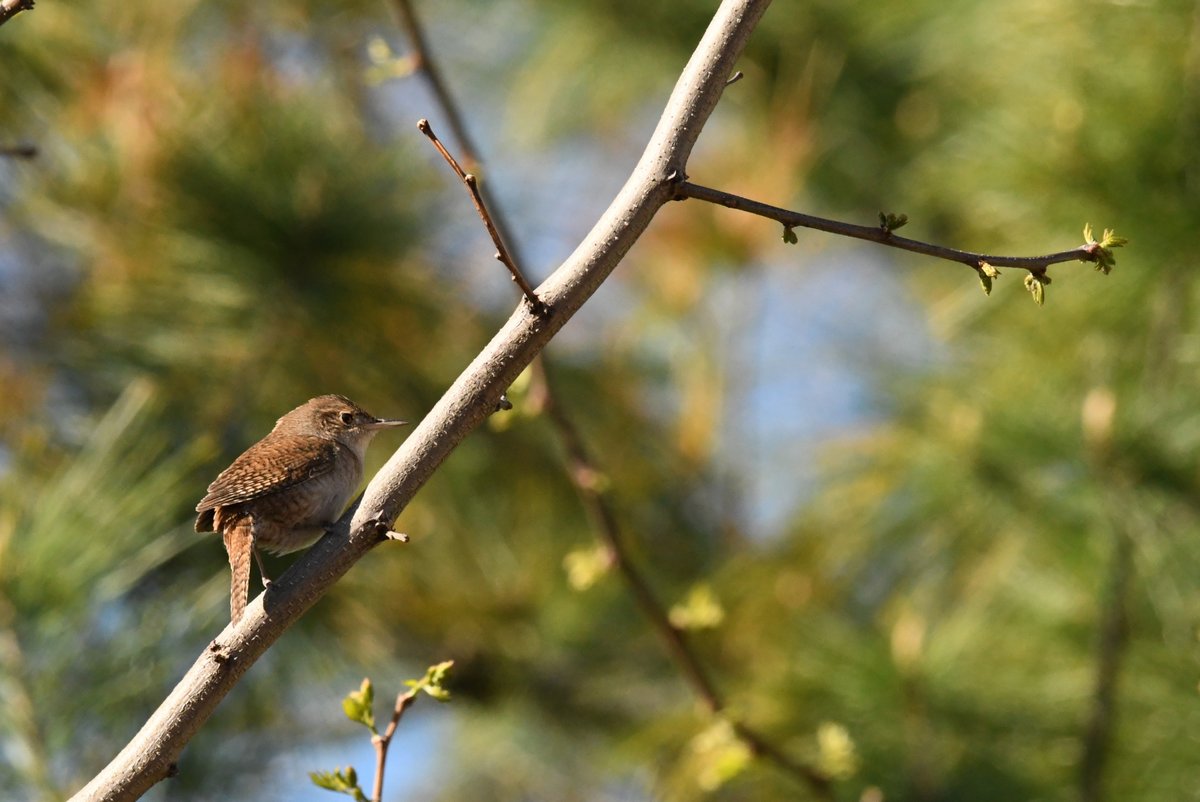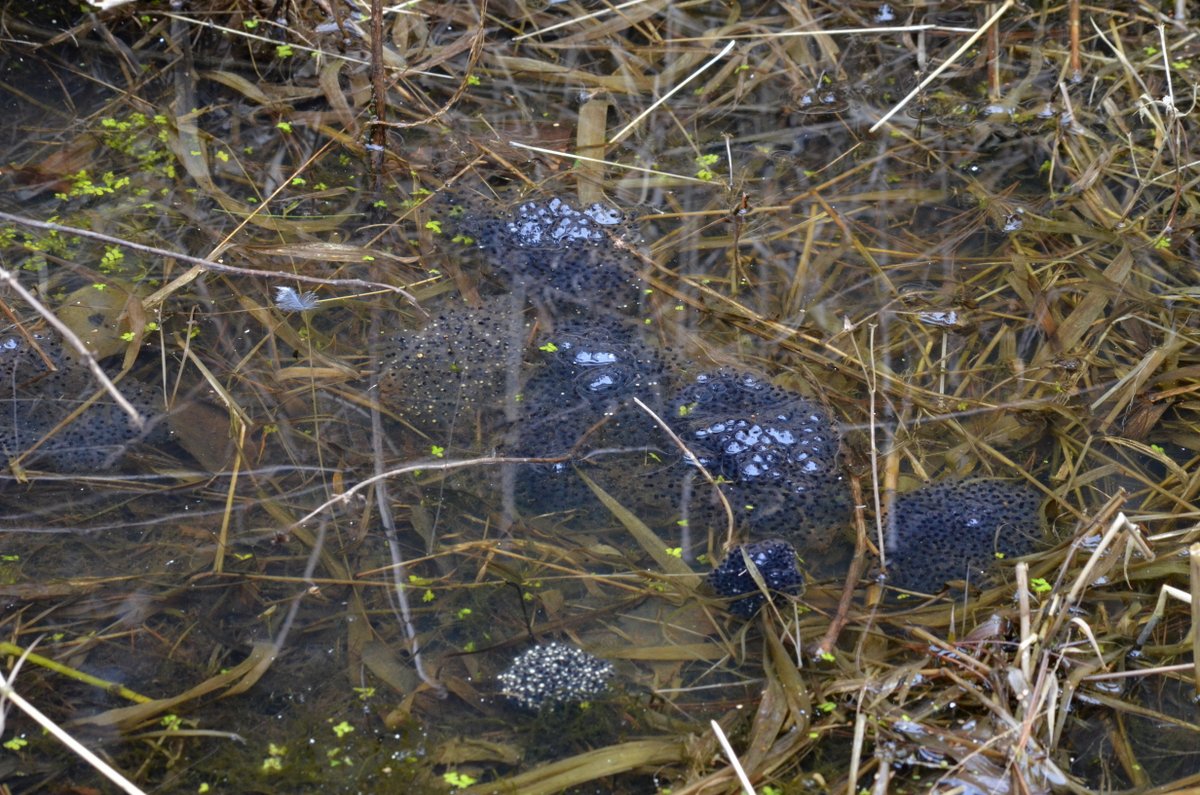Chances of survival
Spring may be a season of abundance, the time when life springs forth from the dark depths of winter, but it is also a season of incredible waste. And a staggering amount of death. Some parents fight an uphill battle to get their young old enough to fend for themselves. I’ve been watching a harried female house wren toiling daily to bring food back to the four young filling her nest. I’ve also been watching a red squirrel slinking around her territory. Whenever the squirrel gets too close to the wren, a fight erupts. And with good reason. Squirrels, both red and gray, can be one of the most significant predators on bird eggs. A study in Europe showed that gray squirrels (imported from North America) discovered between 35 and 100% of all nests, and depredated (ate) eggs/nestlings from about 5% of these.
Not sure if this makes the birds feel much better, but a squirrel only has a 25% chance of surviving to celebrate its first birthday. The odds of any animal species making it to adulthood is staggeringly low. Once the birds are out of the nest it’s they’re still not in the clear. Some species of birds may lose any much as 70% their young within the first couple weeks of fledging (source). As a compensation for such high mortality rates, virtually all living organisms have a phenomenal reproductive capacity, from plants (a mature paper birch can 8.5 million seeds) to ferns (sensitive fern produces billions of spores) to animals, and this, finally, brings us to the humble wood frog.
During the spring, a female wood frog deposits a single mass of somewhere between 500 and 3,000 eggs. Immediately the eggs are under assault from predators. If there are eastern newts in the pond, which there were at the pond where we collected the eggs, they will happily consume the wood frog larvae right from the eggs. Somewhere between 15-70% of a cluster can be eaten by newts. Wood frogs, however, tend to lay eggs in areas free of newts and fish. If the egg does successfully hatch, the tadpole then faces danger from crayfish, dragonfly larvae, leeches, other frogs, like green frogs, and in some cases (source) late breeders can even be cannibalized by adult wood frogs. In the end <1% of the eggs deposited by a female will actually wind up metamorphosing into froglets. Of those lucky froglets, less than 25% will make it to the next breeding season. So in the end, from the initially egg mass with 3,000 eggs, it would be surprising if more than a half dozen individuals made it to a breeding pond the following spring.
There are two methods for estimating how long a conifer holds onto its needles. The first relies on fall colors, so isn’t that helpful right now. When the needles have changed colors (and before they’ve fallen from the tree), you can easily estimate the fraction of needles on the twig that have changed colors. In white pines, roughly 1/2 of the needles will be yellow. The needles live 2 years (technically growing seasons, with a few stragglers extending into the 3rd growing season). In white cedar, it’s closer to 1/3 that change colors. meaning their needles live about 3 years. But this doesn’t always work as some conifers will lose a significant number of green needles during the winter (up to 20% in black spruce). This skews the ratio so that the needles appear to have shorter lifespans.
Method 2: Aging twigs
A second, and more accurate method for calculating needle longevity, is by counting annual rings (those terminal bud scale scars) along the twig. The vast majority of conifers can only sprout new leaves from their buds (pitch pine, which has latent buds under the bark, is a notable exception), so the oldest needles on the branch are the ones closest to the trunk. Count each ringlet of bud scale scars as you work your way back along the branch until you reach the last section with any needles on it. This number is the number of Mays ago the needles “hatched.”
So if it’s October of 2022 and you count 4 rings to the last needle, then the needles on that branch burst open in May of 2019. To carry the hatching analogy further, these needles were “conceived” in July of 2018, remained dormant through the winter, and were “born” in May of 2021 when the buds opened. The first few rings are rather easy to count this way (there should be a distinct color change across the annular ring line), but the older rings can be trickier to find and so takes practice and a little guess work.
Maximum needle longevity
Below are some of the maximum ages of needles that I’ve calculated for various conifers. Note that the lifespan of needles may vary within a tree: needles grown in the shade (where they’re more protected from wind, snow, ice, and harsh UV radiation) tend to live longer. Additionally, within a species, individuals growing in warmer climates tend to retain needles longer than in colder climates (source, source).
| Species | Est. max age of needles |
|---|---|
| White pine | 2-3 growing seasons |
| White cedar | 3-4 growing seasons |
| Scots pine | 4 growing seasons |
| Canada yew | 7 growing seasons |
| Jack pine | 7 growing seasons |
| Red spruce | 9 growing seasons |
| Eastern hemlock | 11 growing seasons |
| Norway spruce | 14 growing seasons |
| Balsam fir | 16 growing seasons |
The limitation with this method is that the needles can live so long that the annual ring becomes nearly indiscernible. You can always cut a twig just behind the oldest needle and count the growth rings. Similar problem here for slender branches where the small rings can be exceptionally difficult to make out.










